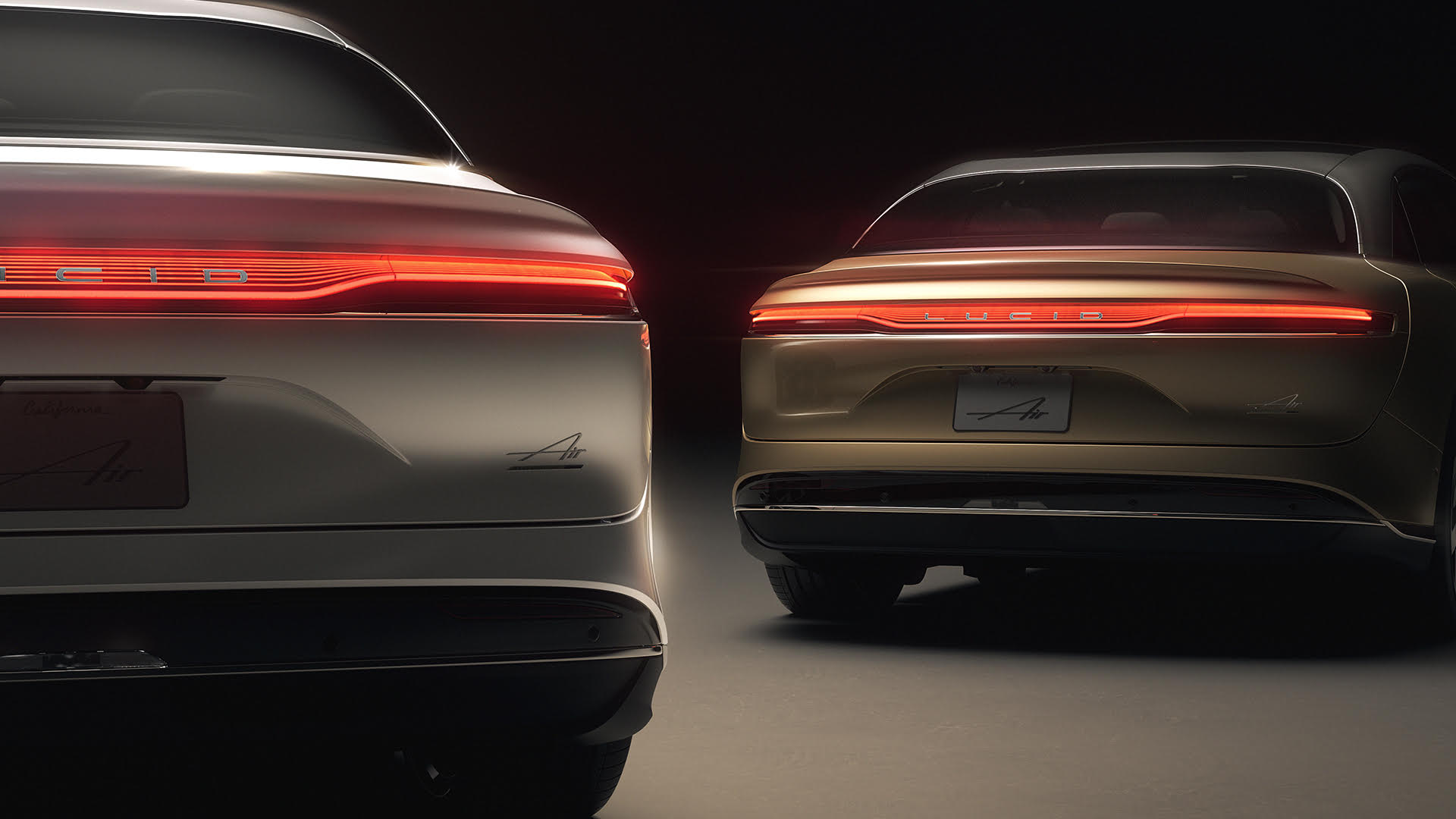

Are cylindrical cells the reason Lucid, Tesla, and Rivian lead in range?Are cylindrical cells the reason Lucid, Tesla, and Rivian lead in range?
The Tesla Model 3 compact sedan, Lucid Air large sedan, and Rivian R1T pickup truck are the range and efficiency leaders in their respective classes. The three automakers have a key technology choice in common, beyond exclusively making battery electric vehicles: They each favor cylindrical batteries.
Late last month at the company’s official factory start, we asked Lucid CEO Peter Rawlinson about the choice to go with cylindrical cells—in the Air and, perhaps, well beyond.
“I am cell format agnostic,” Rawlinson said, pointing out that Tesla is also using prismatic cells (in a limited number of vehicles for China, with the more stable LFP chemistry). “But today there are significant technical advantages with cylindrical.”
Lucid, under its Atieva business, was supplying packs to all Formula E race cars for three seasons—using cylindrical cells—and it has amassed a great knowledge base about the tradeoffs for various cell brands, chemistries, and types.
“Tesla was the range king and we’re going to take that mantle by the look of it,” Rawlinson said. “But it just amazes me that other companies don’t do cylindrical.”
Car with AA cylindrical batteries – SNL parody, 4/2016
Not everyone agrees. At its EV day last March, GM executives confirmed that while they’d considered cylindrical cells, large-format pouch cells were their clear choice. According to battery pack lead engineer Andy Oury, the pouch cell approach provides “the fewest number of the largest cells possible.” That meant GM could cut wiring and connectors within the modules, and each of those gigantic 100-Ah cells holds about as much energy as 20 typical cylindrical cells.
GM is not the only one. Hyundai has also turned to favor pouch-style cells in its E-GMP platform, and it’s what Ford plans to use in its F-150 Lightning electric pickup. There’s some momentum in a shift the other way, with BMW announcing a focus on prismatic cells, and signs of a shift to unified prismatic cells for the VW Group.
Tesla CEO Elon Musk last month was asked about cell form factors and called the probability of thermal runaway “dangerously high with large pouch cells,” and pointed to the physical challenges of cooling them.
Generally agree, but probability of thermal runaway is dangerously high with large pouch cells. Tesla strongly recommends against their use.
— Elon Musk (@elonmusk) September 3, 2021
Some of these preferences—and the perceived risk level, as some see it—could feasibly change later in the decade, in a shift to solid-state cells.
As Rawlinson has explained it in the past, Lucid’s choice of cylindrical lithium-ion cells comes down to thermal attributes and the consistency and reliability of the cells themselves, as well as their predictable cost on the market. It also means not being bound to the design constraints of larger cells. Lucid is proud of how the Air’s pack isn’t a squared-off brick; the pack is specially contoured to support the sedan’s excellent 0.21 coefficient of drag.
Lucid Air battery pack
Lucid has also designed its “race derived” single brick injection-molded battery modules around simplified manufacturing, but with a different mindset than GM. With a single operation, it molds the electrical “bus bar” connectors into the module housing and is “designed for manufacture in the millions of units,” according to the company—for everything from future models and energy storage to other OEMs or industries.
Rivian, meanwhile, has chosen to package its 2170-format cylindrical cells in two layers, separated by a horizontal cooling plate in the middle of the pack—likely a more complex assembly process.
Rivian cooling plate between battery layers [from video]
Both Lucid and Rivian have also indicated they’ll pursue energy storage systems. Rivian revealed in its IPO filing earlier this month that it’s considering the future manufacture of its own batteries to complement a supply from cell suppliers. Lucid, on the other hand, has said that it’s focused on the manufacture of cars—and keeping much of the core technology in-house—but not cells themselves.
What about larger cylindrical cells, such as the 4680 (46 mm diameter by 80 mm long) ones that Tesla is working toward?
Lucid’s Rawlinson subscribes to the idea that larger-format cylindrical cells—like 4680s—would help Lucid get to economies of scale. And there’s a simple reason for that, he says: because the ratio of its volume to surface area is greater, driving down costs while potentially keeping the technical advantages.
Future Tesla cell will make energy, power gains
“The case of a cylindrical cell is disproportionately more expensive to make than the core, than the jelly roll,” he summed. “So if you make one bigger, it’s cheaper.”
Rawlinson confessed that he’d been rooting for the 2360 (23 mm by 60 mm) size that would have allowed more flexibility versus the 2170 (21 mm by 70 mm) size that Tesla and cell suppliers have settled on as a volume cylindrical cell—as he wanted to make the cabin floors 5 mm lower, not 5 mm higher.
The Lucid Air is using 2170-format cells supplied by Samsung SDI in the initial Dream Edition, then “next-generation” cells from LG for the Grand Touring model down through the rest of the lineup. Rivian relies on Samsung SDI for its supply of 2170 cells. Tesla’s primary supplier of 2170 cells remains Panasonic, via the Nevada Gigafactory.
Deciding on ideal cells is an engineering problem with different solutions depending on the vehicle and its use case, and how a company sees the tradeoffs. Yet there’s something to be said now, with the three American companies still seeing cylindrical as the near-term choice.
View original article at: “https://www.greencarreports.com//news/1133877_cylindrical-cells-advantages-tesla-lucid-rivian-range”
Add a comment Cancel reply
Comments (0)
faceless niches
… [Trackback]
[…] Read More to that Topic: autoseu.com/are-cylindrical-cells-the-reason-lucid-tesla-and-rivian-lead-in-rangeare-cylindrical-cells-the-reason-lucid-tesla-and-rivian-lead-in-range/ […]
토렌트 다운
… [Trackback]
[…] Here you can find 37292 more Information to that Topic: autoseu.com/are-cylindrical-cells-the-reason-lucid-tesla-and-rivian-lead-in-rangeare-cylindrical-cells-the-reason-lucid-tesla-and-rivian-lead-in-range/ […]
Related posts


Electric SUVs: Top 6 Models for Family Trips











